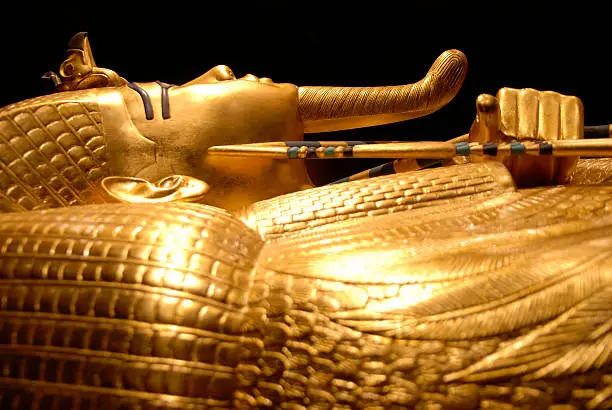Tutankhamen (Valley Of The Kings - KV62)

Tutankhamen
Tutankhamen lived during the 18th dynasty and is believed to be one of the greatest members of the Egyptian royal families of the time. His name means the Living image of Amun and he became ruler at the age of 9. Tutankhamen is believed to have ruled until his death at the age of 17-19.
The Tomb Of Tutankhamun:
The tomb of Tutankhamun, KV62, is believed to be a burial cache for the king. The tomb is not really a tomb and depicts a small pit that is located near the tomb of Seti I. It’s like an unfinished shaft of a tomb whose construction is believed to have been abandoned. The tomb was used as a cache for funeral equipment and grave goods of Tutankhamen as it’s said that his tomb which was KV62 was robbed soon after he was buried there.
The tomb contains some embalming materials from the ruler’s tomb and also material from the funerary meal of the pharaoh. About 12 sealed jars containing various objects like pottery, natron, linen, animal bones, and floral wreath were found.
Important Finding
A small linen cloth found inside the cache of Tutankhamun was an important find as it has hieratic text meaning, The good god, Lord of the Two Lands, Nebkheperure Beloved of Min. Nebkheperure was the prenomen (a royal name) of Tutankhamen, so the text found on the linen cloth confirmed that the goods were from Tutankhamen’s tomb.
The Discovery
Winlock, in 1923, suggested that KV54 was not the tomb of Tutankhamun, but it was an embalming cache that had items left from the mummification of the king. The clue was important in finding the actual tomb of this ruler. From what was found from the funerary banquet and more, it was estimated that a total of eight people were mourning at the funeral of Tutankhamun.
The tomb of Tutankhamun was finally discovered by Howard Carter in 1822 and similar items were found at the cache at the tomb’s entrance. The robbery in the original tomb led to the removal of the remaining material to KV54. The corridor was then filled with debris and rocks in order to prevent any future attempts of robberies or break-ins inside the tomb of Tutankhamen. It’s evident now that KV54 was not actually the real tomb of Tutankhamun and an actual tomb was still present in the Valley of the Kings elsewhere.













-askaladdin.webp)
-askaladdin.webp)

-askaladdin.webp)


















